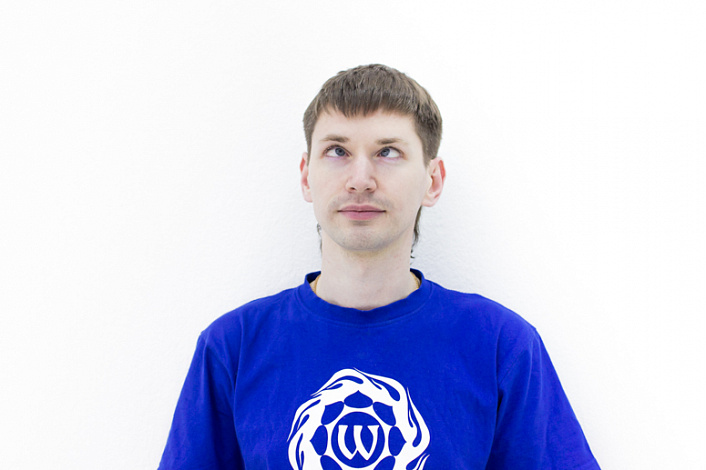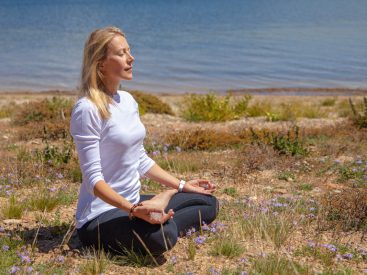Thogah citta-vritti-nirodhah “ – this definition, set forth by the sage Patanjali in the text of the Yoga Sutra, contains the whole essence of yoga practice.
It translates as: “Yoga is the cessation of the movements of consciousness.”
It is to this state, ultimately, all practitioners strive, and therefore, if you practice yoga under the guidance of a teacher, you can often hear in the classroom such instructions: “focus on the practice”, “remain mindful”, “concentrate the mind” and so on. like that.
Well, how can you concentrate when there are so many thoughts in your head!
One replaces the other at the speed of the wind. And then you have to remember about breathing. And monitor the sensations in the body so that the practice is beneficial. What concentration is there.
And awareness: what is this new fashionable “trick”? How does it “look” – this very awareness?
This is not an idle question, since it is awareness that is the key to achieving the above-mentioned state. So let’s take a closer look at what is “awareness”?
Instead of surfing the Internet in search of answers, I advise you to start small: try to decide for yourself – “what is awareness”?
Speak out loud, or write it down, or better – share with someone your thoughts on this matter.
This practice helped me a lot to cross the stage of “find that, I don’t know what”, and my actions became more purposeful. Although I am aware that as I develop, I will most likely change my idea of awareness, but now it is seen for me as a state of presence. The state when the mind is synchronized (so to speak) with actions and speech. Then you are at the essence.
But, like any state that is not regularly maintained, the state of awareness also tends to slip away. That is why it is important to develop it. And there are very specific techniques for developing awareness. There are many of them in psychology, and among Taoists, and among Christians (“the presence of God in the mind”), and among the Toltecs (“here and now”), they are also in yoga.
In order to set the direction of attention, calm mental activity and “turn on” awareness, the Drishti technique was passed on to the ancient yogis.
Translated from Sanskrit, the word “Drishti” means “vision”, “look”, “wisdom” (comes from the root drs – “to see, to look at”).
The practice itself is to direct your attention to an object and concentrate on it. This helps to bring together all your strength and purposefully use energy. After all, you must admit that when we are just starting to do yoga, it is difficult to constantly hold our attention. A beginner (and not only) quickly gets tired of smooth, seemingly monotonous movements, loses concentration, starting to look at something (his fingers, or the fingers of a neighbor, or a hole in the wall …) or ponder his problems, or dream of an upcoming dinner.
What happens in moments like this? The flow of energy weakens, the force dissipates following the scattered attention, the practice becomes ineffective. Conversely, when attention is fixed, the gaze is motionless, and the mind also gains stability. According to Ashtanga Yoga, each asana has its own Drishti.
There are nine main points:
- Nasagra – the tip of the nose
- Brumadhya – between the eyebrows
- Padhaioragray – toes
- Angushta Ma Dyai – Thumbs Up
- Nabi Chakra – navel
- Khastagray – brush
- Parshva 1 – to the side (to the right)
- Parshva 2 – to the side (left)
- Urdhva Antara – up, sky
Sounds simple, doesn’t it? You just need to “freeze” your gaze at a fixed point, and the trick is in the bag! But, despite its apparent simplicity, it is not so easy to master Drishti. The nature of the mind is such that it constantly strives for movement, causing both your body and your emotions to vibrate.
But it’s good that concentration techniques are not limited to the list of the above 9 points.
One can simply start by concentrating on the breath while doing the asanas. Develop such a state that breathing is not tense, restrained or interrupted, breathe slowly, calmly and measuredly. This is also a kind of Drishti.
It will be ideal if you master the Ujaya breathing and practice it during the practice of asanas. After all, stretching the breath helps to calm the mind. And when you no longer need to make special efforts for proper breathing, you can practice concentration on external objects.
Speaking about the practical benefits of Drishti, it is worth noting the “applied” nature of this technique in the life of an ordinary, socially active person. As I mentioned earlier, the whole point is that not only the gaze is delayed, but also the attention. And where our attention is, there is all the energy.
Thus, all efforts that can be directed to one specific goal are collected at one point. Training attention during practice makes a person more collected in life. If you need to complete a task, then in a state of concentration you see the maximum of opportunities, do not lose sight of important points. And it comes easy for you, because you are used to concentrating during yoga. This is the first and most superficial “bonus” that we can get by practicing Drishti – to overcome our absent-mindedness and learn how to achieve our goals.
Further – more: the practice of Drishti is very helpful when performing balance asanas. So, for example, if we, while performing Uttita Hasta Padangushthasana, fix our gaze on the big toe, this helps to relieve psychological stress. “It is almost impossible for any person to remain or become tense when their attention is directed to the big toe,” notes the book of the Bihar School of Yoga, The Ancient Tantric Practices of Yoga and Kriya.
Also, meditation with the practice of Drishti in the chest area is a great way to relax after a busy day at work. But that’s not all. Thanks to Drishti, attention is shifted from the outer world to the inner one. Concentration on the breath and silence of the mind are practiced. This establishes control over thoughts and a deeper sense of life.
If you concentrate in the area between the eyebrows (this practice is called Shambhavi mudra), then a person overcomes his ego and can expand his awareness, penetrate into the essence of all things. This practice is mentioned in many classical yoga texts. For example, in the Gheranda Samhita it is said: “Direct your eyes to the eyebrow center. Reflect on your true self. This is shambhavi mudra, the main secret of all tantric texts. ” (Ch. 3:59)
We learn to see the inner essence of objects. We develop viveka (discrimination) and vairagya (detachment). The practice of viveka allows you to see the world as it is, to distinguish what is really important from what is transitory. Vaigragya is detachment when we understand that everything in this world is temporary and do not have much attachment to material things. These qualities are important for any person who wants to live in harmony with the world and be happy.
And finally, for “advanced” practitioners, I will say that the practice of Drishti helps to approach the sixth and seventh steps of yoga (dharana and dhyana), allows you to accumulate enough strength and energy to master Mahamudra (the highest form of awareness), and keep it continuously for 24 hours per day.
Thus, the practice of yoga can be extended not only to everyday life, but also to the entire existence of a person.
Awareness to you, friends, and success in practice. Ohm!



